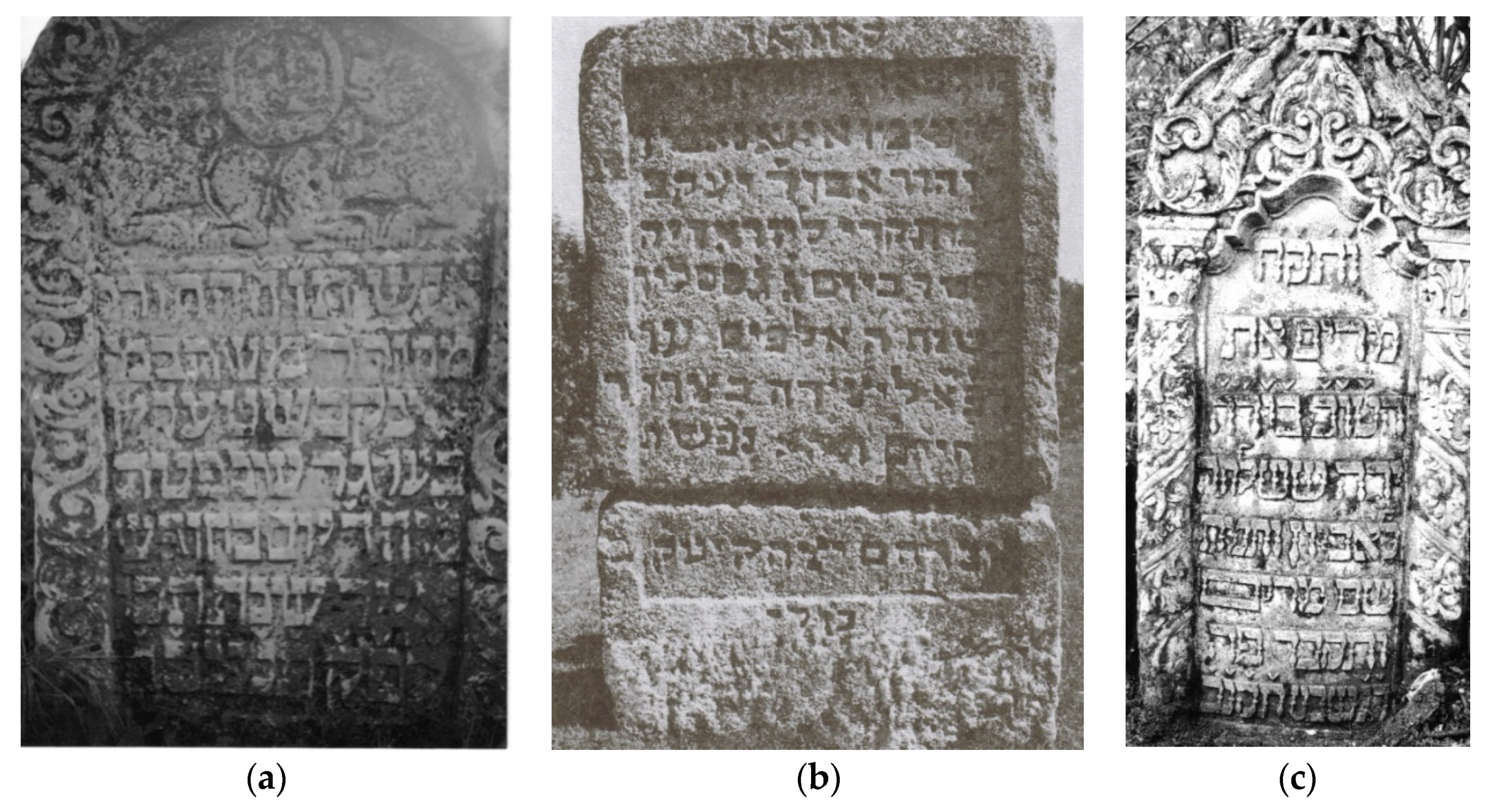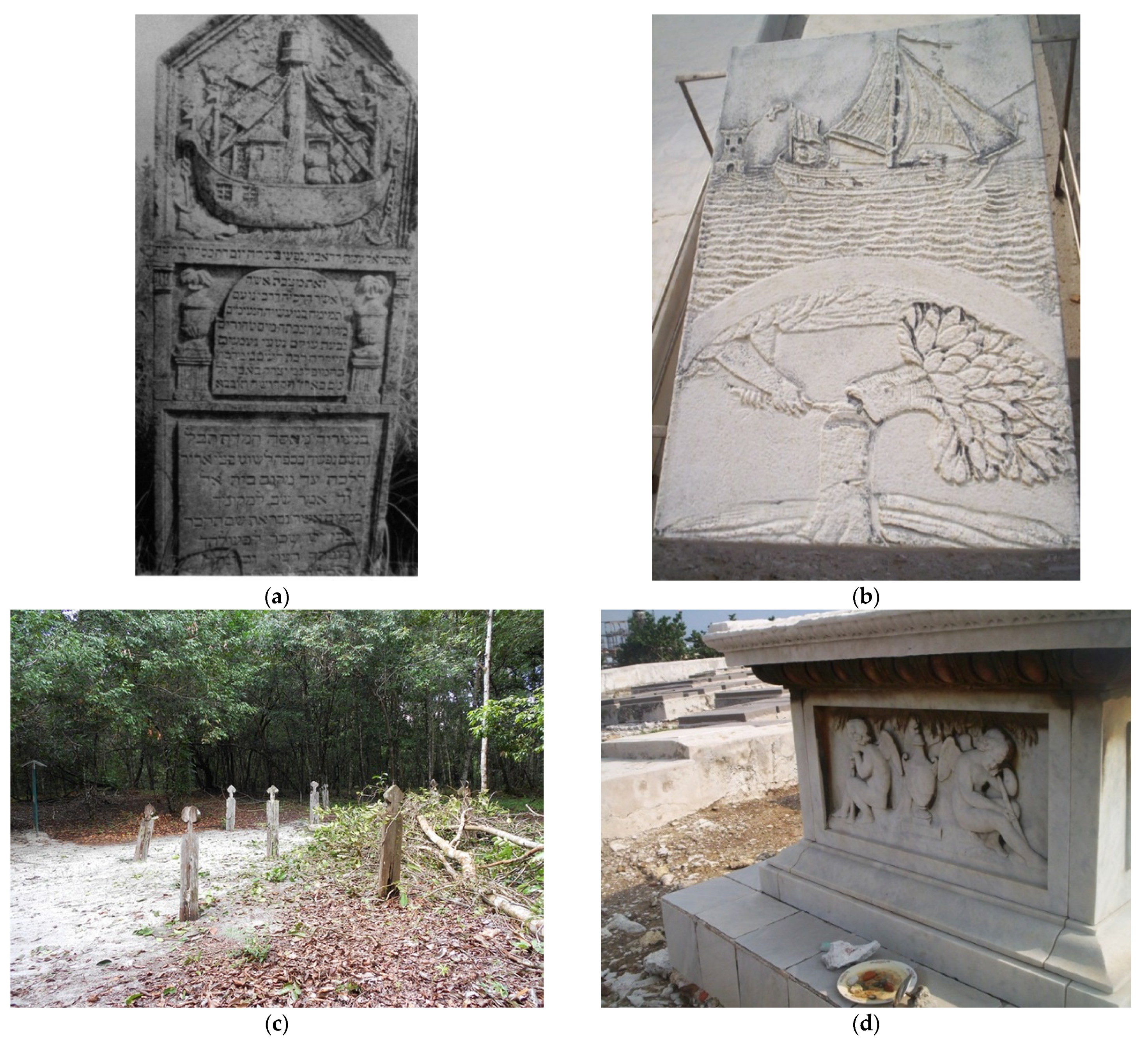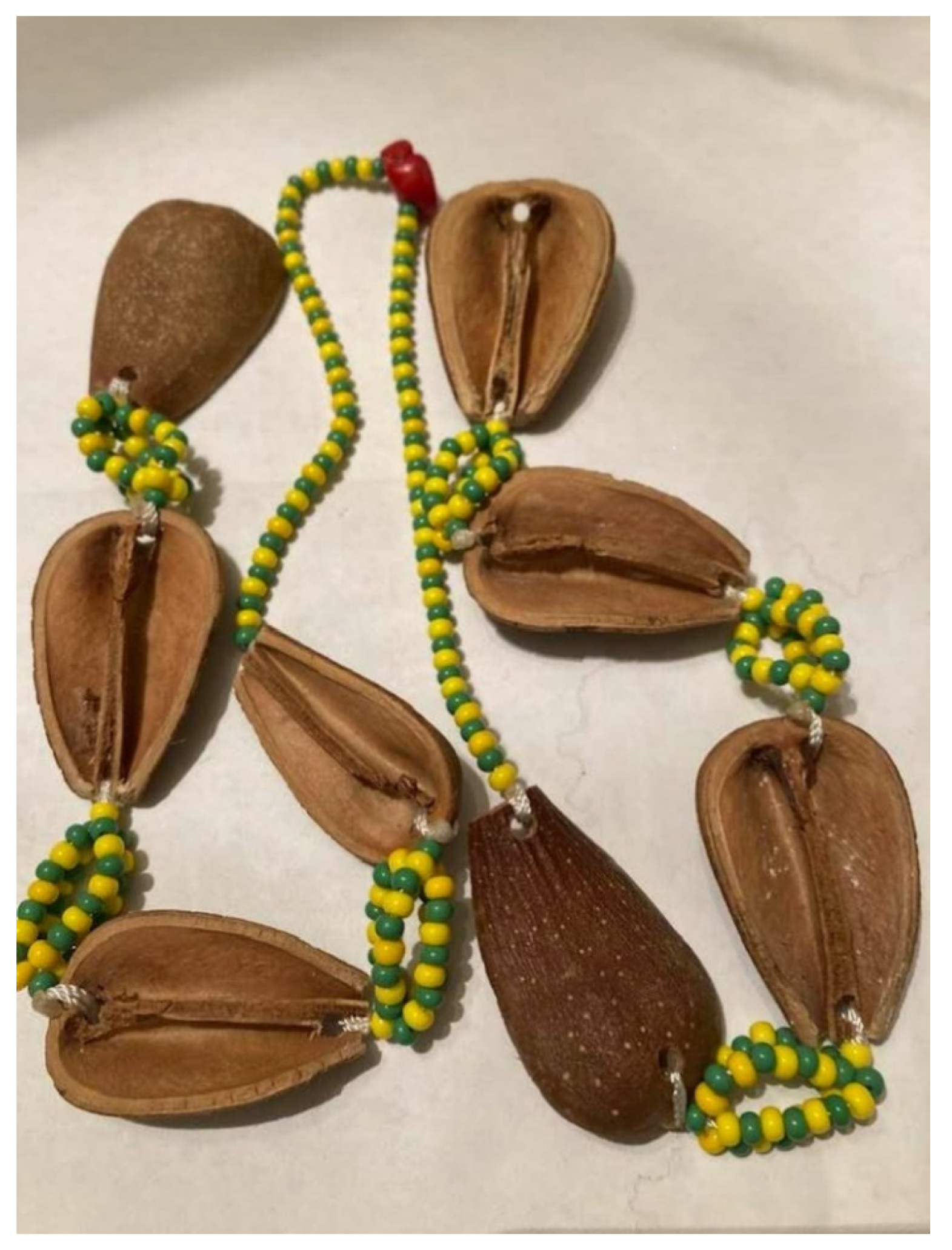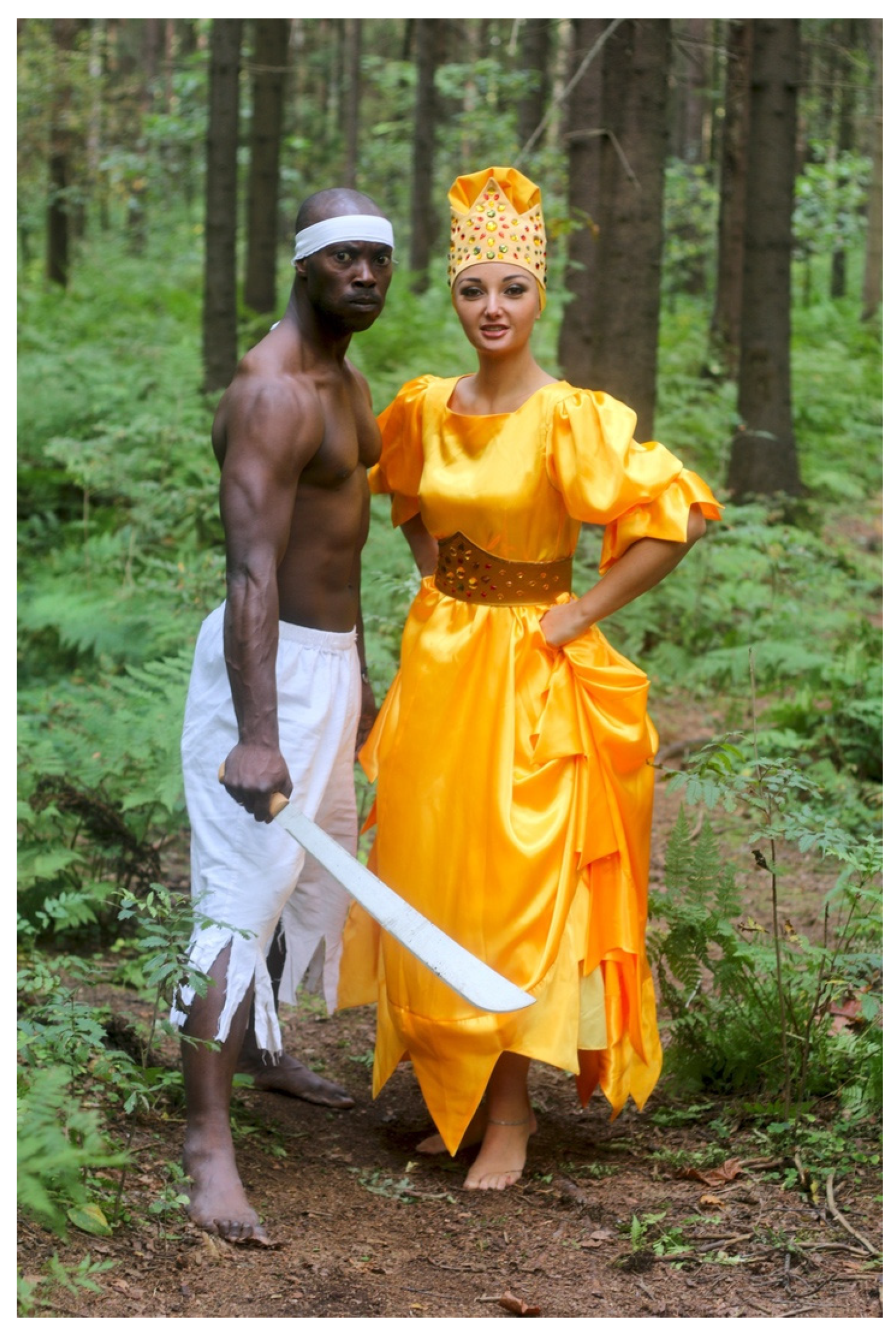Translation or Divination? Sacred Languages and Bilingualism in Judaism and Lucumí Traditions
Abstract
1. Introduction
2. Bilingualism and Translation in Judaism
2.1. Hebrew-Aramaic Bilingualism and Its Traditional Interpretation
“A King can talk about his personal needs to his servants. However the king would rarely talk to his ministers, and if he talks to them, then it is only in a royal manner so that nobody would think that they are equal to him. About the servants, nobody would assume that they are equal to the King, so there is no concern. Therefore, the ministering angels can understand every language and there is no concern [that it would be equated to the Hebrew language], but with the Aramaic language, there is a concern”(Shelah, Pesahim, Matza Shemura).
“May the Prayer [=Eighteen Blessings] be recited in any language? Behold Rab Judah has said: A man should never pray for his needs in Aramaic. For R. Johanan declared: If anyone prays for his needs in Aramaic, the Ministering Angels do not pay attention to him, because they do not understand that language!’”(Sotah 33a)
“The principal meaning is that the Ministering Angels do not understand the Aramaic language at all, as it is not even called ‘a language’. As I explained on Megilla 10b on ‘And I took a name from Babylonia…,’ they do not have writing and language. The Aramaic language is not a part of the seventy languages, although it is a language, it is not among the seventy created by the Holy One, blessed be he. Why is Aramaic not among the seventy languages? Because it is said in Sukkah 52a about the Chaldeans that ‘they will not be a people’… The Torah paid respect to the Aramaic language; however, it does not belong to the seventy languages of the peoples of the world. This is because among the angels there are seventy appointed as ministers over the peoples of the world, however, the angels have no connection to the Aramaic language.”
“The Translation [=the Aramaic language] has the aspect of the World to Come because it is not considered a language at all, as it is said ‘And I took a name from Babylonia…’ (Megilla 10b) about the Chaldeans who have no writing and language of their own. As we explained in a different place, the Aramaic language or the language of Babylonia is not considered a language. Its essence is thought, and the thought corresponds to the highest degree of the World-To-Come. This corresponds to ‘Translation once’. In addition, the Ministering Angels do not understand Aramaic, and ‘Translation once’ corresponds to the World-to-Come, as it is known that it belongs to Israel and not to the angels(Tiferet Israel, 13).
‘Rabbi Juda said on behalf of Rava: Adam, the first man, spoke Aramaic’ (Sanhedrin 38b) The meaning is that neither the Holy Language nor the rest of the seventy languages were appropriate for Adam. Because the Holy Language is a particular language of one nation, and the seventy languages as well. For Adam to master every language that originated from him, a particular language was inappropriate. However, he had the Aramaic language(Hiddushe Aggadot).
2.2. Hebrew-Yiddish Bilingualism
2.3. Case Study: Hebrew Epitaphs from Eastern Europe
התורני שטערקבערגר מהורר משה במ’ יעקב
נתן פּאר תחת אפֿר כי פּה נטמן איש נאמן ר’ יהודא בן ר’ יעקב דמתקרי ליודא
ותקח מרים את הטוב בידה ידה ששלחה לאביון ותנוח שם מרים תקבר פה ך”ג שבט תקנ”ב
3. Bilingualism in the Lucumí/Santería Tradition
3.1. Is Lucumí a Language?
“Latin would always have a higher prestige whereas Anagó only temporarily has prestige within the community of Anagó speakers during ritual actions and ceremonies. This is because Anagó is identified with a lower social class and therefore may also stigmatize the speaker creating tension. Therefore within a limited community, such as during a ritual, Anagó temporarily ascends to a higher position, and Spanish which is the dominant language, comes the low variety. This makes the classification of Anagó speakers difficult in terms of diglossia or bilingualism.”
“Within the belief system of Yoruba culture, there is the overwhelming belief in the divine power of the word… bara is the power of creative speech. Bara is the power that sets life force (aṣe) in motion.”
3.2. Connecting Sacral and Mundane by Divination
“Cuban religious practitioners are engaged in ‘divining’ hidden meanings that relate to a sacred and transcendent Africa, based on Lucumí’s status as an esoteric divine language and its capacity to store and transmit deep religious knowledge without revealing it.” (Wirtz 2007a, p. 245) She further states that Santeros describe Lucumí as a divine language or the “tongue of the oricha” (la Lengua de Los oricha) highlighting its tremendous importance in maintaining ritual channels of communication with the orichas. “Lucumi texts such as songs and invocations are widely known among santeros, who can expertly perform them in rituals, whether or not they profess any understanding of a text’s referential content. Indeed, only a few santeros feel able to offer translations or detailed explanations of even a few Lucumí texts, even though most santeros control a lexicon from a few dozen to hundreds of Lucumí words and phrases. Santeros thus display a bifurcated and very partial linguistic competence in Lucumí, in which they control a set of individual Lucumí words and phrases that have denotational (semantic) meaning and a set of phrases and longer texts that have primarily pragmatic and connotative meanings and often cannot even be segmented into individual words and translated.“
3.3. Sacred Dances
“As we can see that the same steps can be performed in both Elegua and Yemaya. However, when we analyze the movements of the body, hands, the semantic meaning of the dance changes depending on the deity for whom they are performed.”
“We see that the movements of the body, hips, shoulders, characteristic of dances of African origin, are already included in the so-called salon dances, for example, in the habanero, mambo, cha-cha-cha, and our modern Salsa Casino ….”
“In all of these religions, practically all, dancing and singing induce trance in some performers. After all, the goal is to establish a direct connection between the invoked deity and the human being.”
“And if Eleguá had never arrived, much of the blame for his absence would have fallen on the musicians, as they are responsible for “bridging the gap between heaven and earth”. If such a failure were to happen several times on Alberto’s watch, he and his group would no longer be asked to play at toques, as his ability to bridge the gap (an important form of aché, or divine agency) would be assumed to be weak or dysfunctional. Such a judgment would deprive him and his group not only of money but, perhaps more importantly, of ritual status in the community. For this reason, Alberto and other “dual” musicians try to keep the two genres separate, in an attempt to protect and promote the divine possibilities of sacred intent. In fact, the two performance categories of “sacred” and “profane” do inform each other, which is what makes their often articulated distinction so compelling. According to Alberto and his group, the musicians use “the same” batá rhythms and songs in folkloric performances as they do in toques de santo. One could argue, then, that “real” and “folkloric” possession performances must occur along a continuum; indeed, one cannot exist without the other. Possession is compelling precisely because it is a performance, whether one believes it is divinely guided or not; what comes across is a sense of otherness, a separation from one’s ordinary humanness. What differs, of course, is the intent of the performance, and the relative competence of the participants. The intent of a toque de santo is to bring down the oricha, an intent realized with the help of competent, ritually savvy participants.”
4. Conclusions
Funding
Institutional Review Board Statement
Informed Consent Statement
Data Availability Statement
Acknowledgments
Conflicts of Interest
| 1 | While grammatically correct vocalization would be Leshon ha-Qodesh with shwa in status constructus, the traditional spelling and pronunciation which influenced Yiddish pronunciation is with kamatz/kometz. |
| 2 | The “Seven African Powers” became a popular concept of Santería in the United States, while in Cuba sixteen orishas are recognized (Lefever 1996, p. 323) including such important orishas as Ochosi (responsible for justice) and Oya (responsible for winds and markets), who have their own dances. |
| 3 | Note that the actual contact between the Jewish and Santería traditions were very limited. Note that another Afro-Cuban diasporic religious tradition, Palo Monte Mayombe (Las Reglas de Congo), uses the term “Jewish”, which referres to any unbaptized (or, simply, non-Christian) person or an “unbaptized” object intended for “black magic.” This terminology is also employed in Santería (Bettelheim 2001, p. 43). |
References
- Bettelheim, Judith. 2001. Palo Monte Mayombe and Its Influence on Cuban Contemporary Art. African Arts 34: 36–49, 94–96. [Google Scholar] [CrossRef]
- Bohak, Gideon. 2007. Ancient Jewish Magic: A History. Cambridge: Cambridge University Press. [Google Scholar]
- Brandon, George. 1997. Santeria from Africa to the New World. Bloomington: Indiana University Press, p. 56. [Google Scholar]
- Carbonero, Graciela Chao. 2020. Lectures on the History of Cuban Folk Dances. Available online: https://salsainrussian.ru/cikl-lekcij-po-istorii-kubinskix-narodnyx-tancev-grasiela-karbonero/ (accessed on 30 September 2021). (In Russian).
- Clark, Mary Ann. 2001. No Hay Ningun Santo Aqui! (There Are No Saints Here!): Symbolic Language within Santería. Journal of the American Academy of Religion 69: 21–41. [Google Scholar] [CrossRef][Green Version]
- Concordia, Maria J. 2012. The Anagó Language of Cuba. Master’s thesis, Florida International University, Miami, FL, USA. [Google Scholar]
- Fernandez, Alexander. 2014. Odú in Motion: Afro-Cuban Orisha Hermeneutics and Embodied Scholarship, Life Reflections of a Lukumí Priest. Master’s thesis, Florida International University, Miami, FL, USA. [Google Scholar]
- González-Wippler, Migene. 2002. Santeria: The Religion: Faith, Rites, Magic. St. Paul: Llewellyn Publications. [Google Scholar]
- Hagedorn, Katherine J. 2000. Bringing Down the Santo: An Analysis of Possession Performance in Afro-Cuban Santería. The World of Music 42: 99–113. [Google Scholar]
- Lefever, Harry G. 1996. When the Saints Go Riding In: Santería in Cuba and the United States. Journal for the Scientific Study of Religion 35: 318–30. [Google Scholar] [CrossRef]
- Lipsky, John. 1987. On the Construction ta + Infinitive in Caribbean Bozal Spanish. Romance Philology 40: 431–50. [Google Scholar]
- Miller, Michael T. 2016. The Name of God in Jewish Thought A Philosophical Analysis of Mystical Traditions from Apocalyptic to Kabbalah. London: Routledge. [Google Scholar]
- Nosonovsky, Michael. 1999. Hebrew epitaphs of the 16th century from Ukraine. In Monuments of Culture: New Discoveries—1998. Moscow: Nauka, pp. 16–27. [Google Scholar]
- Nosonovsky, Michael. 2008a. The scholastic lexicon in Ashkenazi Hebrew and orthography. Pinkas Journal of the Culture and History of East European Jewry Vilnius: Zara 2: 53–76. [Google Scholar]
- Nosonovsky, Michael. 2008b. Old Jewish Cemeteries in Ukraine: History, Monuments, Epitaphs. In The Euro-Asian Jewish Yearbook-5768 (2007/2008). Moscow: Pallada, pp. 237–61. [Google Scholar]
- Nosonovsky, Michael. 2009. Folk beliefs, mystics and superstitions in Ashkenazi and Karaite tombstone inscriptions from Ukraine. Markers 26: 120–47. [Google Scholar]
- Nosonovsky, Michael. 2017. Connecting Sacred and Mundane: From Bilingualism to Hermeneutics in Hebrew Epitaphs. Studia Humana 6: 96–106. [Google Scholar] [CrossRef]
- Shapira, Dan. 2010. Yiddish–German, Slavic, or Oriental? Journal of Black Sea Studies 6: 127–40. [Google Scholar]
- Villepastour, Amanda. 2011. The legacy of Ortiz’s Yorubization of Lucumí Translation as transculturation. HAU: Journal of Ethnographic Theory 11: 1. [Google Scholar] [CrossRef]
- Villepastour, Amanda. 2019. The Cuban lexicon Lucumí and African language Yoruba: Musical and historical connections. In Handbook of the Changing World Language Map. Edited by Stanley D. Brunn. Dordrecht: Springer. [Google Scholar] [CrossRef]
- Weinreich, Max. 2008. History of the Yiddish Language. New Haven: Yale University Press. [Google Scholar]
- Wirtz, Kristina. 2007a. Divining the Past: The Linguistic Reconstruction of ‘African’ Roots in Diasporic Ritual Registers and Songs. Journal of Religion in Africa 37: 242–74. [Google Scholar] [CrossRef]
- Wirtz, Kristina. 2007b. How Diasporic Religious Communities Remember: Learning to Speak the “Tongue of the Oricha” in Santería. American Ethnologist 34: 108–26. [Google Scholar] [CrossRef]
- Wirtz, Kristina. 2014. Performing Afro-Cuba: Image, Voice, Spectacle in the Making of Race and History. Chicago: University of Chicago Press. [Google Scholar]




| Feature | Judaism | Santería |
|---|---|---|
| Bilingualism | Hebrew-Aramaic (or Hebrew-Yiddish) | Lucumí-Spanish |
| Meaning created by | Translation | Divination |
| Underlying process | Causality | Synchronicity |
| Used for | Prayer | Dance |
| In secular domain | Secular literature | Secular Afro-Cuban dances |
| Supreme power | Prohibition to depict the God | Supreme orishas do not dance |
Publisher’s Note: MDPI stays neutral with regard to jurisdictional claims in published maps and institutional affiliations. |
© 2022 by the author. Licensee MDPI, Basel, Switzerland. This article is an open access article distributed under the terms and conditions of the Creative Commons Attribution (CC BY) license (https://creativecommons.org/licenses/by/4.0/).
Share and Cite
Nosonovsky, M. Translation or Divination? Sacred Languages and Bilingualism in Judaism and Lucumí Traditions. Religions 2022, 13, 57. https://doi.org/10.3390/rel13010057
Nosonovsky M. Translation or Divination? Sacred Languages and Bilingualism in Judaism and Lucumí Traditions. Religions. 2022; 13(1):57. https://doi.org/10.3390/rel13010057
Chicago/Turabian StyleNosonovsky, Michael. 2022. "Translation or Divination? Sacred Languages and Bilingualism in Judaism and Lucumí Traditions" Religions 13, no. 1: 57. https://doi.org/10.3390/rel13010057
APA StyleNosonovsky, M. (2022). Translation or Divination? Sacred Languages and Bilingualism in Judaism and Lucumí Traditions. Religions, 13(1), 57. https://doi.org/10.3390/rel13010057






